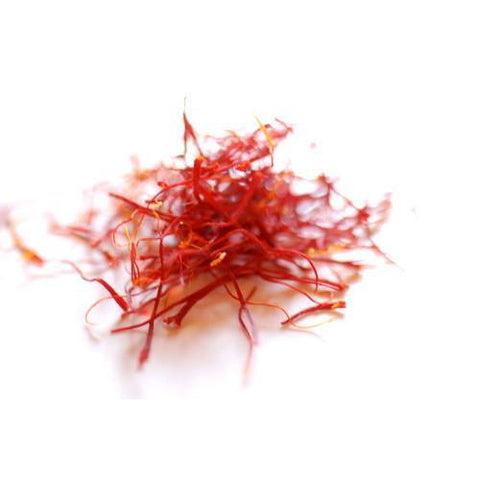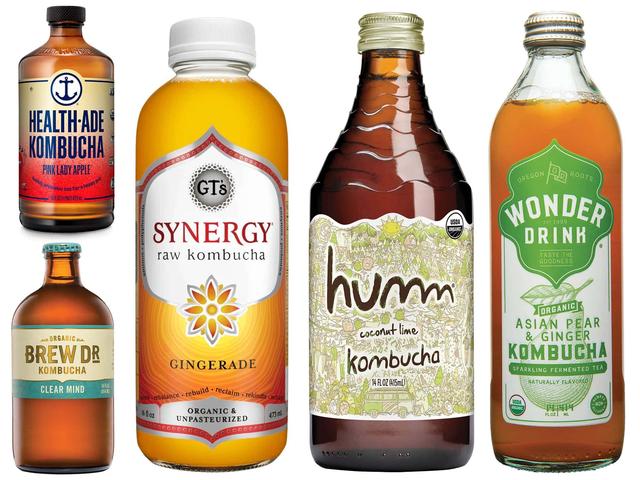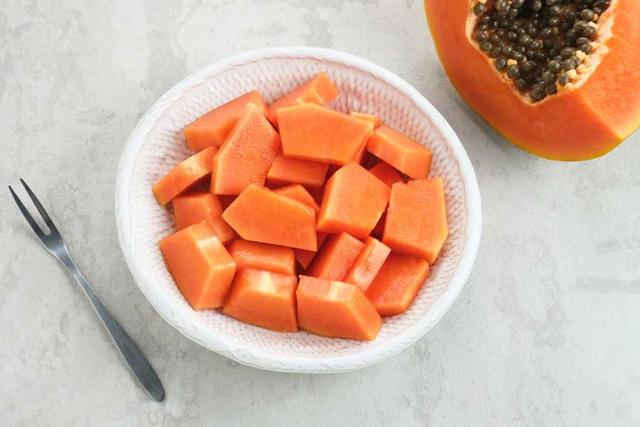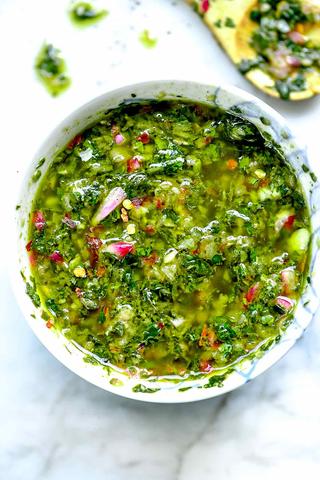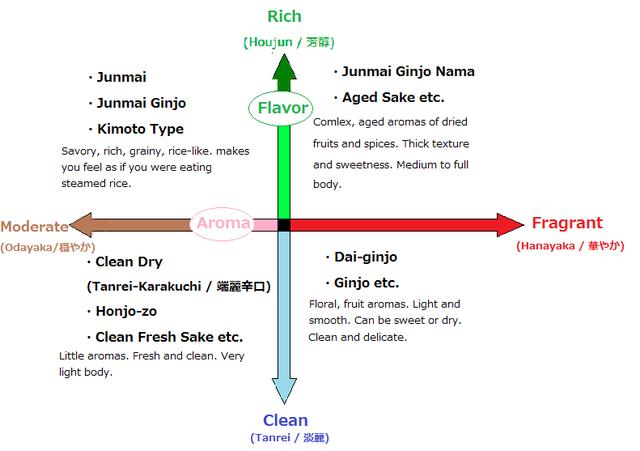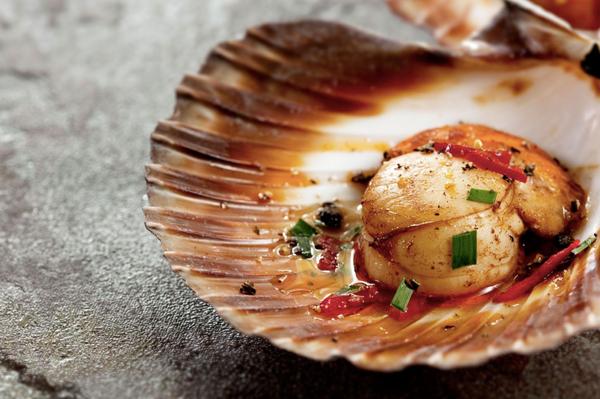
1. Exploring the Delectable Flavors of Scallops: What Do They Taste Like?
Scallops are often referred to as the “candy of the sea” due to their sweet and buttery flavor. They have a delicate nutty taste, similar to hazelnuts and almonds. While they share similarities with clams and oysters in terms of taste, scallops have their own unique flavor profile. Their sweetness is reminiscent of crab and lobster, making them a heavenly seafood option for both shellfish lovers and non-shellfish fans alike.

The Texture of Scallops
In addition to their delicious taste, scallops also have a unique texture. They are tender yet chewy, providing a satisfying bite when cooked properly. However, it’s important not to overcook scallops as they can become rubbery in texture.
Enhancing the Flavor of Scallops
While scallops already have an incredible flavor on their own, there are various ways to elevate their taste even further. Some popular methods include:
– Seasoning with salt and pepper: The simplicity of salt and pepper allows the natural flavors of scallops to shine.
– Cooking in butter: Adding butter brings richness and enhances the overall taste of scallops.
– Incorporating garlic: A touch of garlic adds earthiness to the briny flavor of scallops.
– Squeezing lemon juice: A little bit of lemon juice provides a refreshing tang that complements the sweet taste of scallops.
– Pairing with bacon: The savory and smoky flavor of bacon pairs perfectly with the delicate sweetness of scallops.
– Deep-frying: While searing is often recommended for cooking scallops, deep-frying can create a crunchy outer layer that contrasts with the soft and chewy meat.
– Adding white wine: A splash of white wine adds another layer of flavor to scallops, making them even more enjoyable.
Overall, scallops offer a delightful combination of sweetness, butteriness, and nuttiness. Their unique texture and ability to absorb flavors make them a versatile ingredient that can be enjoyed in various dishes. Whether you’re a seafood enthusiast or new to the world of shellfish, scallops are definitely worth trying for their delectable taste.
2. A Divine Delicacy: Unveiling the Taste of Scallops

Scallops are often referred to as the “candy of the sea” due to their delicious taste. However, not many people have had the opportunity to try this interesting shellfish. If you haven’t tasted scallops yet, you’re missing out on a heavenly seafood experience. Even non-shellfish fans can’t resist the sweet and buttery flavor of scallops.
Some people may be hesitant to try scallops because they are unsure if they will enjoy the taste. But fear not, because today we will uncover everything there is to know about this delectable shellfish. From its definition and types to checking for freshness and cooking methods, we’ve got you covered.
Scallops belong to the mollusk family, which includes octopus, clams, and snails. While you may only see their small spherical meat when ordering them in restaurants, they actually sit inside two fan-shaped shells in their natural state. In fact, if you remember the Little Mermaid, her bra was made from scallop shells!
Scallops can be found in oceans all over the world and can grow up to 9 inches in size. They are fast swimmers and have 50 to 100 tiny eyes spread across the border of their shell opening to help them detect movement.
When it comes to eating scallops, only the white part of their flesh is consumed. This meat is known as the adductor muscle and is just a section of the whole scallop. Despite being delicious, scallops are also incredibly nutritious. They are packed with Omega-3 fatty acids, Vitamin B12, Potassium, and Magnesium. They are 80% protein, low in calories, and completely fat-free.
There are three main types of scallops: bay scallops, calico scallops, and sea scallops. Sea scallops are the most common type and can be found year-round. They can grow up to 2 inches in diameter. Bay scallops are wild scallops that are only available between October and March. They are known for their sweetness. Calico scallops, on the other hand, are in season from December to May and can be found in the US Gulf and other Southern Atlantic coasts.
To ensure you’re getting the freshest scallops, look for ones that are firm, plump, and have a creamy white hue. Avoid matte-white scallops and instead opt for those with pinkish or orange tones, as these indicate good health.
When it comes to cooking scallops, they taste similar to clams and oysters. They have the sweetness of crab and lobster and a delicate nutty flavor reminiscent of hazelnuts and almonds. While they are tender, they can also be chewy if overcooked.
The best way to cook scallops is by searing them to bring out their wonderful flavors. You don’t need many additional elements to enhance their taste – simple seasonings like salt and pepper or cooking them in butter will suffice. However, if you want to add more depth of flavor, you can try incorporating garlic, lemon juice for acidity, bacon for smokiness, or even deep-frying them for a crunchy texture.
In conclusion, scallops are a divine delicacy from the sea with a sweet, buttery taste that is hard to resist. Whether you’re a seafood lover or not, trying scallops should be on your culinary bucket list. So don’t let your uncertainties hold you back – dive into the world of scallop goodness today!
3. The Sweet and Buttery Goodness of Scallops: What to Expect

Scallops are known for their sweet and buttery flavor, making them a highly sought-after delicacy. When cooked properly, scallops have a delicate nutty taste similar to hazelnuts and almonds. They also have a briny flavor that adds a touch of the sea to each bite.
The texture of scallops is both tender and chewy. They are not as firm as clams or oysters but still have a satisfying bite. It’s important to cook scallops just right, as overcooking can cause them to become rubbery.
To enhance the natural flavors of scallops, minimal seasoning is needed. A simple combination of salt and pepper can bring out the full taste of these delectable shellfish. Cooking scallops in butter adds richness and enhances their already heavenly flavor.
For those who enjoy a little extra kick, adding garlic or a squeeze of lemon juice can provide an earthy or tangy element to the dish. Bacon pairs exceptionally well with scallops, as its savory and smoky flavor complements the sweetness of the shellfish.
While searing is often considered the best cooking method for scallops, they can also be deep-fried for a crunchy outer layer that contrasts with the soft and chewy meat inside. Lastly, adding a splash of white wine can add another layer of complexity to the dish.
In summary, expect scallops to have a sweet and buttery taste with hints of brininess. They are tender yet chewy in texture and can be enhanced with simple seasonings like salt, pepper, garlic, lemon juice, or bacon. Whether seared, deep-fried, or cooked in butter, scallops offer a heavenly seafood experience that is sure to delight your taste buds.
4. From the Sea to Your Plate: Discovering the Flavor Profile of Scallops
Scallops, often referred to as the “candy of the sea,” have a unique and delicious flavor that is loved by many. These shellfish are sweet, buttery, and absolutely divine. They have a delicate nutty flavor similar to hazelnuts and almonds, but with their own distinct taste.
When it comes to texture, scallops are tender yet chewy. They have a firmness that adds a satisfying bite to each mouthful. It’s important not to overcook them, as they can become rubbery if cooked for too long.
In terms of taste, scallops share similarities with other shellfish such as clams and oysters. They also have the sweetness of crab and lobster. This combination of flavors makes scallops a truly delightful seafood option.
To enhance the natural flavors of scallops, simple seasonings like salt and pepper are often enough. However, there are several other ways to elevate their taste even further. Cooking scallops in butter adds richness to their flavor profile, while adding garlic provides an earthy element that complements their briny taste.
For those who enjoy a tangy kick, squeezing a bit of lemon juice on top of cooked scallops adds a refreshing acidic flavor. It’s important not to overpower the delicate taste of scallops with too much lemon juice.
Another popular pairing with scallops is bacon. The savory and smoky flavors of bacon complement the sweet and delicate taste of scallops perfectly. This combination creates a harmonious balance that is simply irresistible.
While searing is considered the best method for cooking scallops, they can also be deep-fried for an extra crunch. The contrast between the soft and chewy meat and the crispy outer layer creates a mouthwatering texture experience.
Lastly, adding a splash of white wine to scallops adds another layer of flavor. The wine enhances the overall taste and brings out the natural sweetness of the scallops.
In conclusion, scallops have a unique and delightful flavor profile. They are sweet, buttery, and nutty, with a tender yet chewy texture. Whether cooked simply with salt and pepper or paired with complementary flavors like butter, garlic, lemon juice, bacon, or white wine, scallops are a true culinary delight that should not be missed.
5. A Nutty and Tender Treat: Understanding the Unique Taste of Scallops

Scallops are often described as a nutty and tender treat from the sea. Their taste is truly unique and unlike any other seafood. When cooked properly, scallops have a sweet and buttery flavor that is simply divine. They also have a delicate nutty undertone, reminiscent of hazelnuts and almonds. This combination of flavors makes scallops a true delicacy that is loved by seafood enthusiasts.
One of the key factors in experiencing the full taste of scallops is to ensure they are cooked correctly. Overcooking can make them rubbery and diminish their natural flavors. Searing is often considered the best cooking method for scallops as it brings out their wonderful flavors while maintaining their tender texture.
In addition to their natural sweetness, scallops also have a briny taste similar to clams and oysters. This adds another layer of complexity to their flavor profile. Some people even compare the sweetness of scallops to that of crab and lobster, making them an excellent choice for those who enjoy these types of seafood.
It’s important to note that while scallops are tender, they also have a slightly chewy texture. This chewiness adds to the overall experience of eating scallops and enhances their unique taste. When prepared correctly, this combination of tenderness and chewiness creates a delightful mouthfeel that keeps you coming back for more.
To enhance the already exquisite flavor of scallops, there are several ways to elevate them even further. Simple seasonings like salt and pepper can bring out the natural flavors of scallops without overpowering them. Cooking them in butter adds richness and depth to their taste, making them even more enjoyable.
For those who prefer a little earthiness in their dishes, adding garlic can complement the briny flavor of scallops perfectly. The combination of garlic with the sweet and nutty taste of scallops creates a harmonious flavor profile that is truly delightful.
If you’re looking for a refreshing tangy kick, squeezing a bit of lemon juice on top of cooked scallops can provide the perfect acidic flavor to balance out their sweetness. Just be careful not to overdo it, as you don’t want the lemon to overpower the delicate taste of the scallops.
Bacon lovers will be pleased to know that bacon pairs exceptionally well with scallops. The savory and smoky flavor of bacon complements the sweet and delicate taste of scallops, creating a mouthwatering combination that is hard to resist.
While searing is often recommended as the best cooking method for scallops, they can also be deep-fried to create a different texture and flavor experience. Deep-frying gives the soft and chewy meat a nice crunchy outer layer, adding an element of contrast that makes them even more enjoyable.
Lastly, adding a splash of white wine to your scallop dish can elevate their flavors even further. The acidity and subtle fruity notes in white wine add another layer of complexity to the taste of scallops, making them even more irresistible.
In conclusion, scallops are truly a nutty and tender treat from the sea. Their unique taste combines sweetness, butteriness, and nuttiness with a hint of brininess. When cooked properly and paired with complementary flavors, scallops become an exquisite delicacy that is loved by many seafood enthusiasts. Whether you prefer simple seasonings or more complex combinations, there are endless ways to enjoy the wonderful taste of scallops.
6. Unlocking the Flavors of the Sea: What Does a Scallop Really Taste Like?

Scallops, often referred to as the “candy of the sea,” have a unique and delicious taste that is loved by seafood enthusiasts. These shellfish are known for their sweet and buttery flavor, making them a heavenly treat for the taste buds. Even those who are not typically fans of shellfish can’t resist the allure of scallops.
Scallops belong to the mollusk family, along with octopus, clams, and snails. In their original state, they are found inside two fan-shaped shells. The meat of the scallop is small and spherical, similar to what you would see when ordering it in a restaurant. Interestingly, scallop shells were even used to create Ariel’s bra in Disney’s “The Little Mermaid.”
These delectable shellfish can be found in seas all around the world and can grow up to 9 inches in size. They are fast-swimmers and have tiny eyes spread across the border of their shell opening to help them detect movement.
While the entire flesh of the scallop is edible, we usually only consume the white part known as the adductor muscle. This section is packed with nutrients such as Omega-3 fatty acids, Vitamin B12, Potassium, and Magnesium. Additionally, scallops are 80% protein, low in calories, and completely fat-free.
There are three main types of scallops: bay scallops, calico scallops, and sea scallops. Sea scallops are the most common type and can be found year-round. They can grow up to 2 inches in diameter. Bay scallops are more rare and only available between October to March. They are considered the sweetest among all three types. Calico scallops have beautiful shells but offer a less-sweet flavor. They are in season from December to May.
To ensure the freshness of scallops, look for firm and plump ones with a creamy white hue. Avoid matte-white scallops and instead opt for those with pinkish or orange tones, as these indicate the healthiest scallops. Fresh scallops can be eaten raw, while frozen scallops are best for cooked recipes. When purchasing frozen scallops, choose ones that have been frozen for at least a day to neutralize any bacteria or parasites.
In terms of taste, scallops resemble their shellfish cousins such as clams and oysters. They also have the sweetness of crab and lobster, along with a delicate nutty flavor reminiscent of hazelnuts and almonds. However, they have a unique chewy texture that sets them apart. It’s important to be careful when cooking scallops to avoid overcooking them, as this can make them rubbery.
Searing is considered the best cooking method for scallops as it brings out their wonderful flavors. With such a heavenly taste on their own, minimal additional elements are needed to enhance their flavor. Simple seasonings like salt and pepper can do wonders. Cooking scallops in butter adds richness and intensifies their deliciousness. Adding garlic provides an earthy note that complements the briny flavor of the scallop. A squeeze of lemon juice gives a refreshing tanginess without overpowering the delicate flavor of the scallop.
For those who enjoy smoky flavors, pairing bacon with scallops is a winning combination. The savory and smoky taste of bacon enhances the sweet and delicate flavors of the shellfish. Deep-frying is another option that creates a crunchy outer layer while maintaining the soft and chewy meat inside.
Lastly, adding a splash of white wine to your scallop dish adds another layer of flavor complexity. It elevates the already divine flavors of this seafood delicacy.
In conclusion, scallops offer a unique and delightful taste experience. They are sweet, buttery, and have a delicate nutty flavor. With their tender yet chewy texture, scallops are a true delicacy from the sea that should not be missed.
7. Delight Your Palate with Scallops: Discovering Their Distinctive Flavor

Scallops are known for their distinctive flavor that is both sweet and buttery. They have a delicate nutty taste similar to hazelnuts and almonds, but with a unique briny flavor that sets them apart from other seafood. The sweetness of crab and lobster can also be detected in the flavor profile of scallops.
When cooked properly, scallops have a tender yet chewy texture that adds to the overall enjoyment of eating them. However, it is important not to overcook scallops as they can become rubbery and lose their desirable texture.
To enhance the natural flavors of scallops, simple seasonings like salt and pepper are often enough. Cooking scallops in butter adds richness to their taste, making them even more delectable. Adding garlic provides an earthy element that complements the briny flavor of scallops.
For those who prefer a tangy kick, a squeeze of lemon juice can provide a refreshing acidic flavor that pairs well with the sweetness of scallops. It is important not to overpower the delicate flavor of scallops with too much lemon juice.
Bacon is another ingredient that can elevate the taste of scallops. Its savory and smoky flavor complements the sweet and delicate taste of scallops, creating a delicious combination. Deep-frying scallops gives them a crunchy outer layer while retaining their soft and chewy texture, adding an interesting contrast in texture.
Lastly, adding a splash of white wine to scallop dishes can add another layer of flavor complexity. The wine enhances the overall taste profile of scallops, making them even more enjoyable to eat.
In conclusion, scallops have a unique and delightful flavor that combines sweetness, butteriness, nuttiness, and brininess. Their tender yet chewy texture adds to their appeal when cooked properly. By using simple seasonings and cooking techniques, it is possible to bring out the best flavors of scallops and create delicious dishes that will delight your palate.
8. The Candy of the Sea: Exploring the Sweet and Butteriness of Scallops

Scallops are often referred to as the “candy of the sea” due to their sweet and buttery flavor. Despite this reputation, many people have yet to try scallops and experience their unique taste. If you haven’t tried scallops, you’re missing out on a heavenly seafood delicacy.
Scallops belong to the mollusk family, which includes other shellfish like octopus, clams, and snails. While we typically only see the small spherical meat of scallops when we order them in restaurants, they actually sit inside two fan-shaped shells in their natural state. In fact, if you remember the Little Mermaid, her bra is made from scallop shells!
These delectable shellfish can be found all over the world and can grow up to 9 inches in size. They are fast-swimmers and have 50 to 100 tiny eyes spread across the border of their shell opening to help them detect movement.
When it comes to eating scallops, we typically consume only the white part of their flesh, which is known as the adductor muscle. This section is just a portion of the whole scallop but is considered the most delicious part.
Not only are scallops tasty, but they are also incredibly nutritious. They are packed with Omega-3 fatty acids, Vitamin B12, Potassium, and Magnesium. Additionally, they are made up of 80% protein and are low in calories and fat-free.
There are three main types of scallops: bay scallops, calico scallops, and sea scallops. Sea scallops are the most common type and can be found year-round. They can grow up to 2 inches in diameter. Bay scallops are more rare and only available between October to March when they migrate. They are known for their sweetness. Calico scallops are in season from December to May and can be found in the US Gulf and other Southern Atlantic coasts. They have the nicest-looking shells but a less-sweet flavor.
To ensure you’re getting the best-tasting scallops, it’s important to check for freshness. Fresh scallops should be firm, plump, and have a creamy white hue. Avoid matte-white scallops and look for ones with pinkish or orange tones as these indicate a healthier scallop.
For cooked scallop recipes, frozen scallops are recommended. Look for scallops that have been frozen for at least a day to ensure any bacteria or parasites have been neutralized by the cold.
In terms of taste, scallops resemble their shellfish cousins like clams and oysters. They also have the sweetness of crab and lobster. Additionally, they have a delicate nutty flavor similar to hazelnuts and almonds. However, unlike their counterparts, scallops have a tender yet chewy texture.
Searing is considered the best cooking method for scallops as it brings out their wonderful flavors. The goal is to let the natural taste of the scallops shine through with minimal additional elements. Simple seasonings like salt and pepper are often enough to enhance their flavor. Cooking them in butter adds richness while garlic provides an earthy note. A squeeze of lemon juice adds a refreshing tangy kick without overpowering the delicate taste of the scallop. For those who enjoy smoky flavors, pairing bacon with scallops is a winning combination. Deep-frying can also be an excellent way to enjoy scallops, as it creates a crunchy outer layer that contrasts with the soft and chewy meat inside. Finally, adding a splash of white wine can elevate the flavors even further.
In conclusion, if you haven’t tried scallops yet, you’re missing out on an incredibly delicious and nutritious seafood option. Their sweet, buttery, and nutty flavor combined with their tender yet chewy texture make them a true delicacy from the sea. Whether you enjoy them simply seasoned or prepared with additional elements like butter, garlic, lemon juice, bacon, or white wine, scallops are sure to satisfy your taste buds.
9. From Hazelnuts to Lobster: Unraveling the Complex Tastes of Scallops

Scallops are known for their unique and complex flavor profile that combines elements of various seafood delicacies. When you take a bite of a perfectly cooked scallop, you’ll experience a delightful combination of sweetness, butteriness, and nuttiness. The taste is often compared to that of crab and lobster, which are also considered luxurious seafood options.
One can detect hints of hazelnuts and almonds in the flavor of scallops, adding a delicate and nutty undertone to the overall taste. This makes them stand out from other shellfish varieties like clams and oysters, which have their own distinct flavors.
The texture of scallops also adds to their appeal. While they are tender and melt-in-your-mouth, they also have a slight chewiness that adds an interesting element to each bite. It’s important to note that overcooking scallops can make them rubbery, so it’s crucial to cook them just right to fully enjoy their unique texture.
Whether you choose to sear, boil, grill, bake, or deep-fry your scallops, their wonderful flavors will shine through. To enhance the natural taste of scallops without overpowering them, simple seasonings like salt and pepper are often sufficient. However, if you want to elevate the dish further, you can add ingredients like butter for richness, garlic for earthiness, lemon juice for tanginess, bacon for smokiness, or white wine for an additional layer of flavor.
In conclusion, scallops offer a culinary experience like no other. Their sweet and buttery taste combined with a delicate nuttiness makes them truly divine. Whether enjoyed on their own or paired with complementary flavors and ingredients, scallops are sure to satisfy even the most discerning seafood lovers’ palates.
10. Dive into a World of Flavor: Exploring the Taste Sensations of Scallops
Scallops are often referred to as the “candy of the sea” due to their sweet and buttery taste. They have a delicate nutty flavor that is reminiscent of hazelnuts and almonds. The flavor profile of scallops is similar to their shellfish cousins, such as clams and oysters, and they also possess the sweetness of crab and lobster. This combination of flavors makes scallops a heavenly seafood option that even non-shellfish fans can’t resist.
When cooked properly, scallops have a tender yet chewy texture. It’s important not to overcook them, as they can become rubbery if left on the heat for too long. Searing is considered the best cooking method for scallops, as it brings out their wonderful flavors while maintaining their delicate texture.
To enhance the already exquisite taste of scallops, there are several ways to elevate their flavor even further. One simple and delicious option is to season them with just salt and pepper, allowing their natural flavors to shine through. Cooking scallops in butter adds richness and enhances their overall taste.
For those who enjoy earthy flavors, adding a bit of garlic can give scallops an extra depth of flavor. A squeeze of lemon juice provides a refreshing tangy kick that complements the briny taste of scallops without overpowering it.
If you’re looking for a savory twist, pairing scallops with bacon is a winning combination. The smoky and savory flavor of bacon complements the sweet and delicate taste of scallops perfectly.
While searing is the preferred cooking method for scallops, they can also be deep-fried for a crunchy outer layer that contrasts with the soft and chewy meat inside. This creates an irresistible texture that will leave you craving more.
Lastly, adding a splash of white wine to your scallops can elevate their flavor profile even further. The acidity of the wine adds another layer of complexity, making the dish even more enjoyable.
In conclusion, scallops are a delectable seafood option that offers a unique combination of flavors. Their sweet and buttery taste, along with their tender yet chewy texture, makes them a favorite among seafood lovers. Whether you prefer to keep it simple with salt and pepper or explore more adventurous flavor combinations, scallops are sure to delight your taste buds.
In conclusion, scallops have a delicate and sweet flavor with a hint of buttery richness. Their texture is firm yet tender, often described as creamy or silky. Whether cooked simply or incorporated into various dishes, this popular seafood delicacy offers a unique and enjoyable taste experience for seafood enthusiasts.
Learn More About Grilling
If you want to learn more about grilling, check out these other helpful resources!

